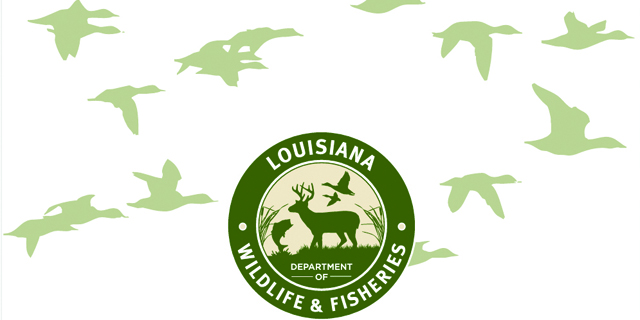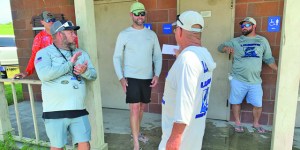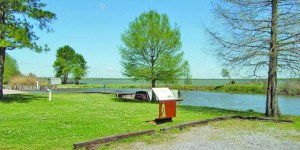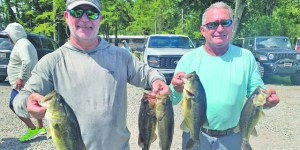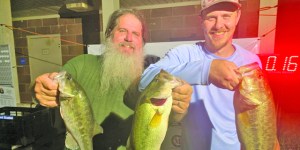Survey results in hand, Olszak ready to propose waterfowl zones
Published 10:45 am Tuesday, August 5, 2025
BATON ROUGE – Louisiana Department of Wildlife and Fisheries’ waterfowl program manager engages in some of his most critical work during these summer months.
Jason Olszak oversaw the distribution of thousands of public opinion surveys earlier this year that helped him make decisions on the future of waterfowl hunting in Louisiana, particularly where and when most waterfowl hunters prefer to hunt.
LDWF has conducted the survey every five years since 2005. In the early years, approximately 56,000 surveys were sent by mail, naturally pricey and time-consuming even before getting the paper forms back to record the answers.
Trending
Email and modern tech have given the process from start to finish a significant boost. Olszak, biologist director Jeffrey Duguay and staff have the data available now at the touch of a computer’s keyboard.
The 2025 LDWF Waterfowl Hunter Survey results are in and tabulated. Hunters answered questions about hunting activity, in-state harvest, out-of-state harvest, degree of satisfaction, zone and split preferences, policy and other issues.
To see the complete results, go to https://www.wlf.louisiana.gov/assets/Resources/Publications/Waterfowl/2025-Waterfowl-Survey-ReportLR.pdf.
First things first for Olszak. He presents his recommendations for Louisiana Wildlife and Fisheries Commission members to consider setting zone and split configurations for 2026-30 during the LWFC’s regular meeting at 9:30 a.m. Aug. 7 in Baton Rouge.
After the commission meeting, Olszak’s plans for zone and split configurations must be settled and delivered to the U.S. Fish & Wildlife Service before Aug. 30. Thanks to the survey, he is on target to get those plans submitted in plenty of time, he said.
Louisiana will be locked into those zones and splits from 2026-30.
Trending
“What I’ll say is maintain the current zone configuration with no change in the boundary and up to three segments in each. Obviously, the commission doesn’t have to go with the recommendation and can go with something else. We’ll find out,” Olszak said from his office here on Aug. 1, warming up to the subject as only a dedicated and veteran waterfowl biologist can.
Olszak, Duguay and staff sent the survey link immediately following the 2024-25 season to 66,651 hunters with a valid email address who registered in the Harvest Information Program. The response rate of 11,636, or 17.5 percent, from outdoorsmen (97.8 percent) and outdoorswomen (2.2 percent) encouraged him.
“Thanks to all who participated in the survey. We had a 13.4 response rate, which is as good as we’ve achieved for this admittedly lengthy public opinion survey which takes place roughly every five years,” Olszak said in a prepared statement released July 28.
Survey responses included 1,943 people who did not hunt waterfowl during the past five years as well as 741 non-resident waterfowlers, he pointed out. As a result, their results were removed from the survey, which meant 8,952 responses, or 13.4 percent, were used for the 2025 HIP, according to Olszak.
The veteran waterfowl biologist also pointed out many of the 37 questions are similar to those asked in so many other past LDWF Waterfowl Hunter Surveys. The repetitiveness helps “effectively evaluate” the responses in changes of opinion, satisfaction, support for policy issues, how hunters have changed, etc., he said.
Information from the surveys inform managers and administrators about current waterfowl hunter activity and issues ranging from demographic changes in the hunting community, plus preferences for structure of seasons, zones and splits, management of public lands and potential regulations changes.
The next opportunity for waterfowl hunters to provide feedback on the state’s waterfowl issues will be in 2030. It’s about making decisions for the state to keep current waterfowlers in the game, so to speak, plus fostering hunter recruitment now and in the future, Olszak said.
Arriving at a preferred number of zones and splits among the state’s waterfowlers remains an important goal of the HIP. The Sportsman’s Paradise has the option to change the number of zones and splits for the 2026-30 waterfowl seasons and must maintain that configuration for five years.
This year’s survey showed 42.1 percent prefer the current format of two zones, each with the option of up to two splits and three opening weekends or one split and two opening weekends.
Other results from the survey, which features numerous charts and graphics, include which parishes were hunted most often in 2024-25. Cameron and Vermilion parishes topped the list at 11.3 percent and 10 percent followed by Avoyelles, 5.2 percent; Plaquemines (4.8 percent), and Jefferson Davis (4 percent) parishes.
Not surprisingly, 56.9 percent of the hunters chose to hunt ducks and/or geese this past season most frequently in the West Zone.
There was interesting feedback on some of the general questions in an effort to evaluate factors affecting duck hunter recruitment and retention. For example, 76 percent of the respondents believe waterfowl migration occurs later now than it did in 2020. Eighty-nine percent of the hunters felt the number of waterfowl wintering in Louisiana has decreased.
Waterfowlers also believe the key issues impacting waterfowl migration to the state are, in order, increase in unharvested crop acreage north of Louisiana, changes in rice agriculture in Louisiana, loss and degradation of Louisiana coastal marshes, increased rice and grain crop production north of Louisiana and warmer winters reducing the need for waterfowl to migrate to the Sportsman’s Paradise.
The survey also questioned hunters’ interest, satisfaction rate and success rate hunting on Wildlife Management Areas across the state. Forty-two percent indicated they supported restricting horsepower on surface drive motors while 51 percent wanted to eliminate the use of surface drive motors on WMAs.
It’s intriguing from beginning to end, a must read for those who want to keep their finger on the pulse of waterfowl hunting in this great state. Thanks to Olszak, we have that opportunity.
DON SHOOPMAN is outdoors editor of The Daily Iberian.


